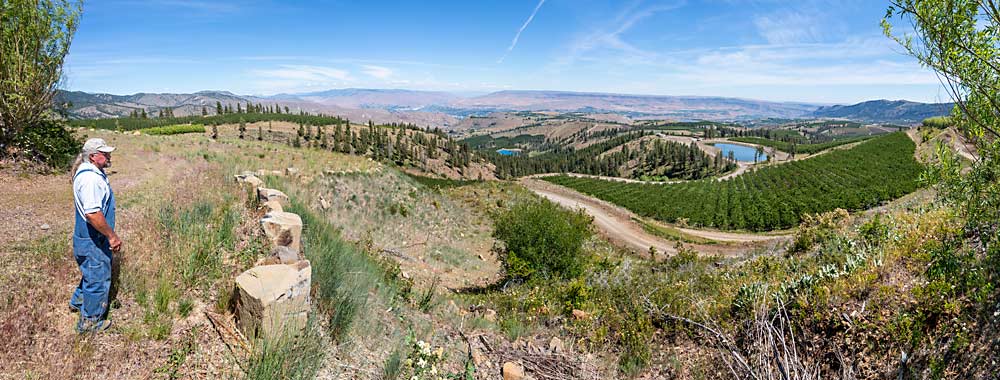
From the steep and scenic slopes of the Cascade foothills to the vast flat farms of the Columbia Basin, it’s hard to describe a “typical Washington orchard.” But when the pandemic forced an international conference for horticulture researchers to be held virtually, organizer Stefano Musacchi wanted to ensure attendees still got a glimpse of how Washington produces fruit today — and how some growers are pushing the envelope to tease out the future of fruit production.
Musacchi, the endowed chair for tree fruit physiology at Washington State University, reached out to Good Fruit Grower for an assist: Photographer TJ Mullinax filmed a series of video “field day” stops, including progressive apple, pear and cherry orchards, to introduce Washington to the international audience.
Musacchi hand-picked the speakers to cover all three major crops, as well as some representative production areas in Washington.
“The speakers involved in the video have a reputation for innovation and understanding of our industry. This translates into a beautiful picture of our fruit industry,” he said. “I hope everybody can see and enjoy these videos. I also want to thank all the speakers for the time dedicated to this important international event. A special thanks also to GFG. Without their contribution, we will have missed the opportunity to show the world our outstanding industry and innovative orchards.”
(For our part, the Good Fruit Grower team was thrilled to be asked to participate.)
Apple advances
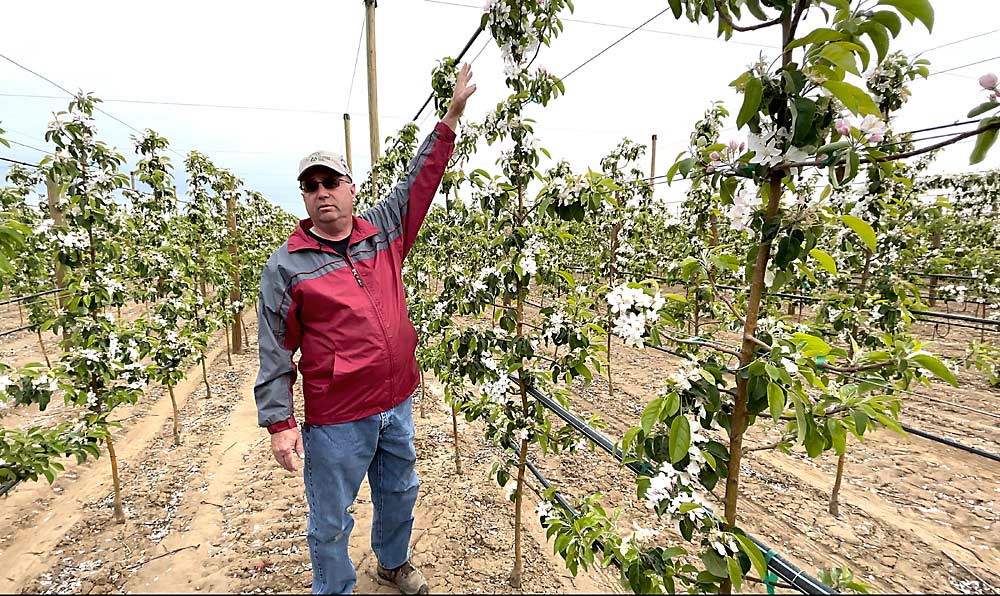
First, Musacchi visited with apple grower Dale Goldy in Quincy, just east of the Columbia River in Central Washington, where vast stretches of flat farmland are now planted with modern orchards.
Goldy’s stand-out: ultrahigh-density plantings designed to speed into production. In 2020, he planted Minneiska on G.935 with 6 feet between rows and 3.5 feet between each tree.
“Minneiska, which is sold as SweeTango, is very sensitive to nitrogen, so the idea here is to eliminate the need for applying a lot of nitrogen to fill space,” Goldy said.
To do so, he needed to plant trees with a head start. Goldy, who owns Gold Crown Nursery, started with bench-grafted trees that grew to about 5 feet in their first year in the nursery. He kept them in the nursery a second year, until they were 7 feet tall, so they already touched the top wire at planting.
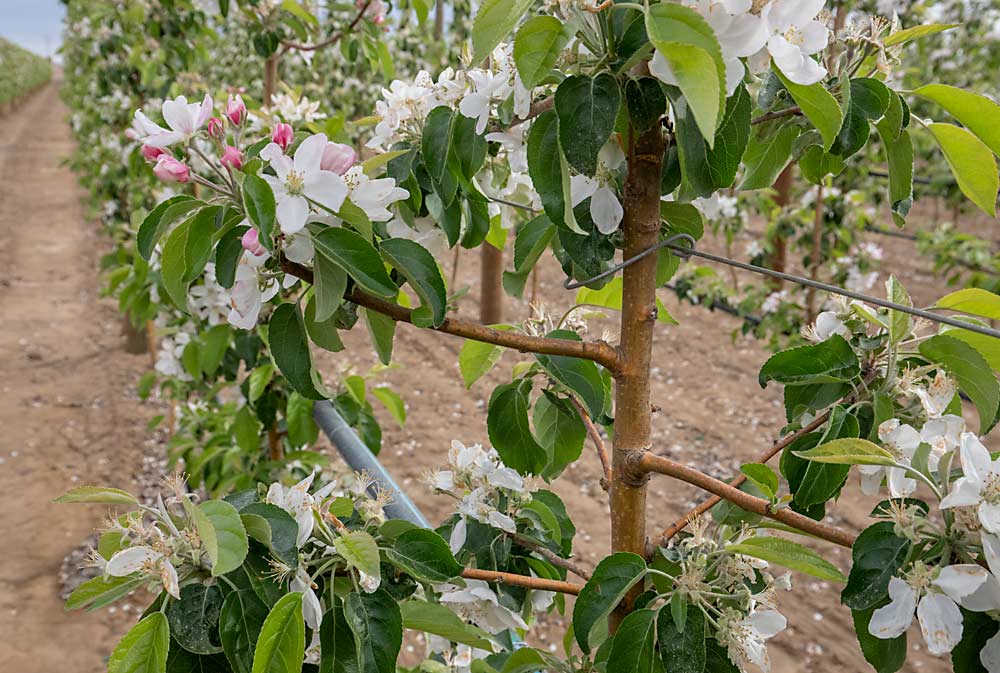
During the second year in the nursery, the nursery crew also scored the trees to induce more branching.
Those small branches will bear fruit in the first years, Goldy said, while they develop branches along the wires.
“This is intended to be a very two-dimensional system,” Goldy said — just 10 to 12 inches wide with windows to let light in. “Sunlight is very important for fruit color development in this variety, so that’s another reason why we are looking at having a thin canopy.”
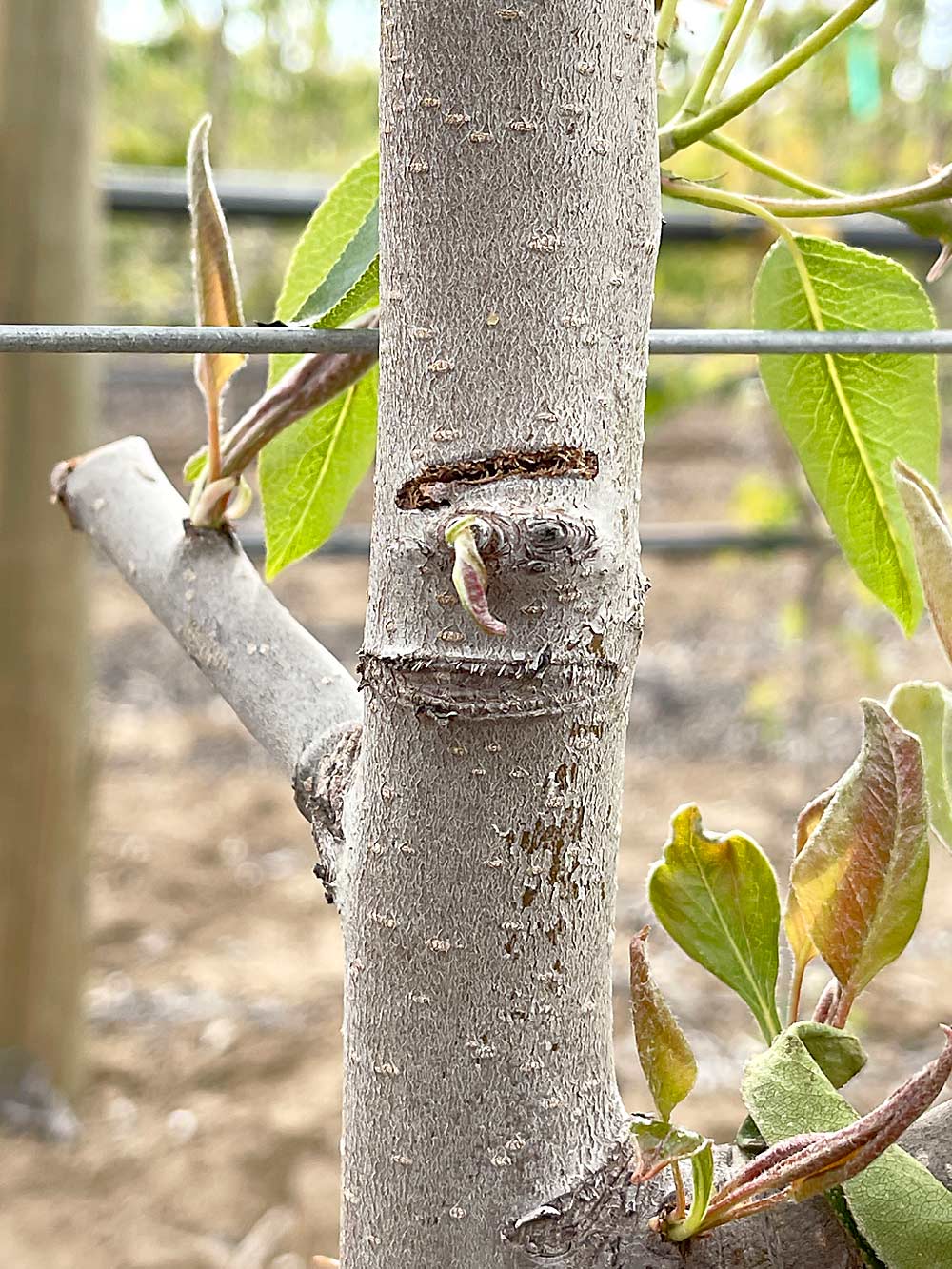
Reviewing bloom in late April, Goldy estimated the second-leaf block would produce about 45 bins per acre. A 2019 planting in the same style, which the video tour did not visit, produced 42 bins per acre in the second leaf, he said.
That early productivity means the orchard breaks even in its second leaf, Goldy said. Then in year three, any profit can go toward the $50,000-per-acre establishment cost (not counting the land).
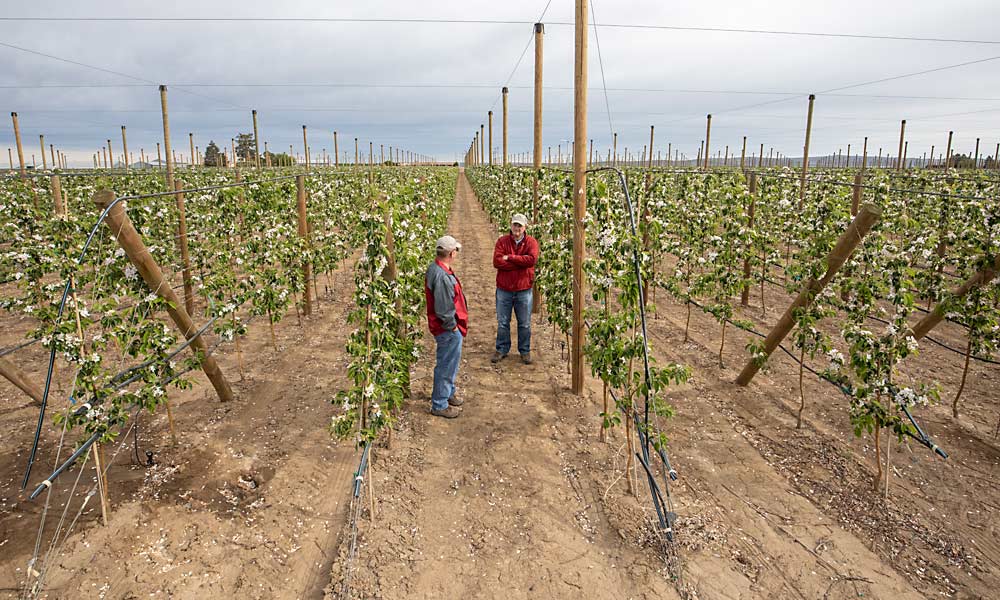
Goldy said he’s heard from other growers who say he’s only been able to plant this way because he owns his own nursery. But the economic estimates he shared include the full tree price.
“A point I want to make is when we plant an orchard, whether we use sleeping eyes or bench grafts or a full-size tree, we don’t compare the cost of the nursery tree with the cost of the years farming those trees until they get into production,” he said. “We used the nursery to try to bypass those preproductive years in the orchard; we’re not spending another $15,000 farming it as a preproductive cost.”
Running equipment through the narrow rows requires some custom equipment, Goldy said. He worked with Automated Ag to design a custom bin trailer, and the farm built its own over-the-row spray equipment.
“We don’t really need airblast because of the thinness of the canopy,” he said. “We have virtually no risk of off-target drift. I feel like it’s an improvement in that regard; we don’t have that drift risk because of how we designed the orchard.”
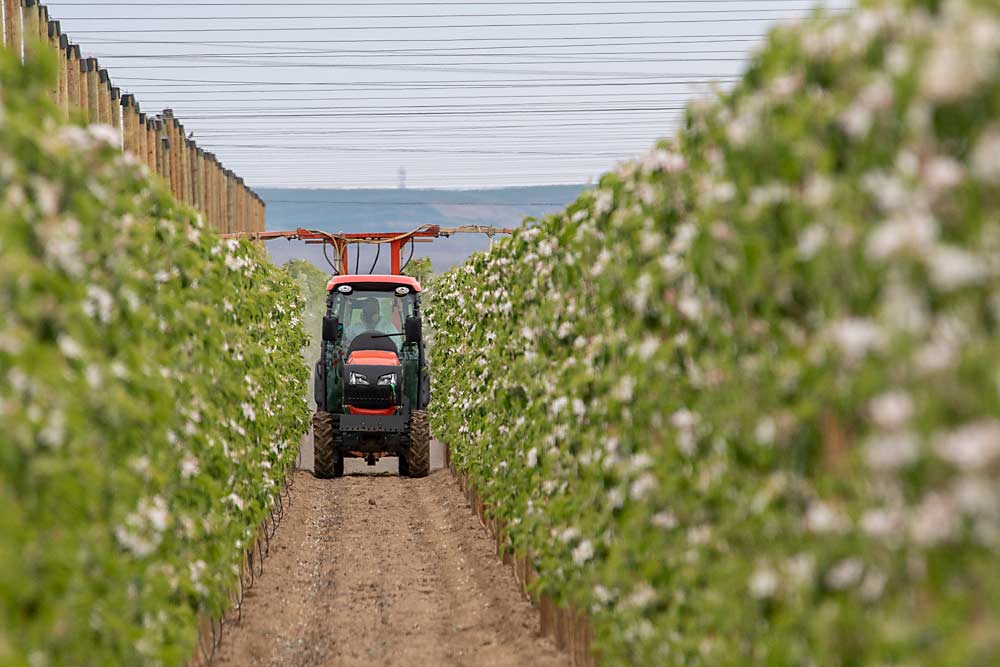
Pear practices
Like many Northwest pear growers, Rudy Prey is farming trees that were planted before he was born. Traditional orchards, planted on Bartlett seedling rootstocks, spaced at 20 feet by 20 feet and, later on, at 10 by 20, remain productive but require aggressive pruning and pest management.
Prey’s farm lies west of Wenatchee, in the Cascade foothills outside the tourist town of Leavenworth, on a steep, north-facing slope overlooking the Wenatchee River. Some of the best pear-producing ground in Washington follows the Wenatchee River as it winds toward the Columbia River through a high-elevation valley with fertile soils and a cooler climate.
Prey took Musacchi, and the video tour, to one of his traditional blocks, then moved on to show how he’s attempting high-density plantings without the benefit of dwarfing rootstocks.
While most of his traditional freestanding blocks are planted at 10-foot spacing with 20 feet between rows and produce 50 to 65 bins an acre, Prey took Musacchi to a block planted at 2,000 trees per acre, with 18 inches between trees and 14-foot rows. His goal: Use the competition to keep the trees smaller.
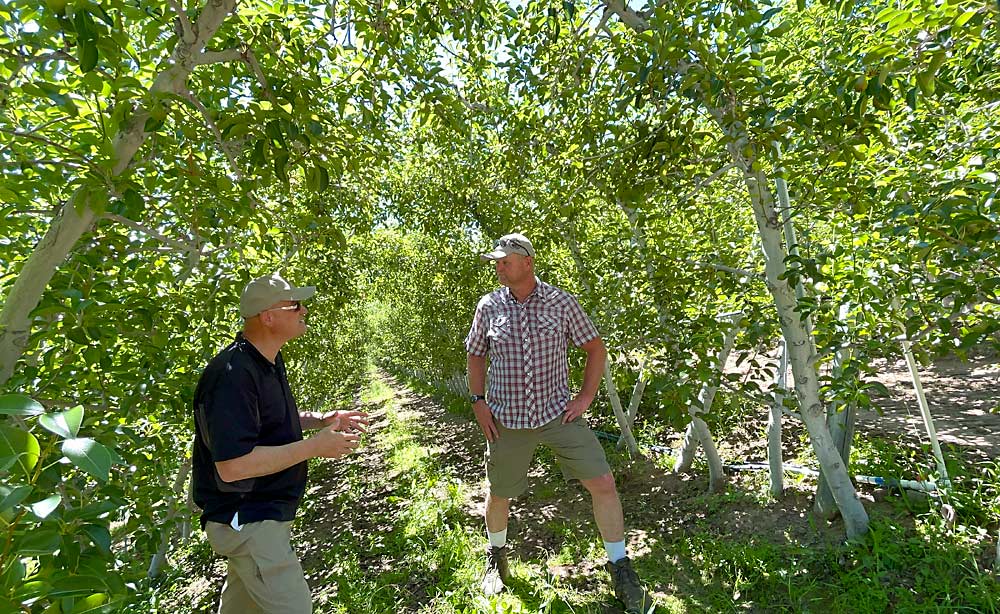
“Originally, we wanted to work the trees with an 8-foot ladder, but we kind of let that go,” Prey said. The trees are now 12 feet tall and tied together over the top of the row to form a V structure without trellis. “These are the height we want. We don’t mind if they touch, but we don’t want them to crisscross.”
The rows run north-to-south across the sloping site, which has made for some farming challenges, Prey said. He wanted to have that orientation to maximize light, but in another block where he planted straight up and down the slope, it’s working fine.
“All of our high-density orchards that are quite vigorous, we’ll come in and strip out any new growth in the center of the tree,” Prey said. It’s quicker and cleaner to do by hand in the early summer, he said, and increases the light and spray penetration.
Pulling suckers, as Prey demonstrated, also tells the tree not to regrow it immediately, Musacchi added.
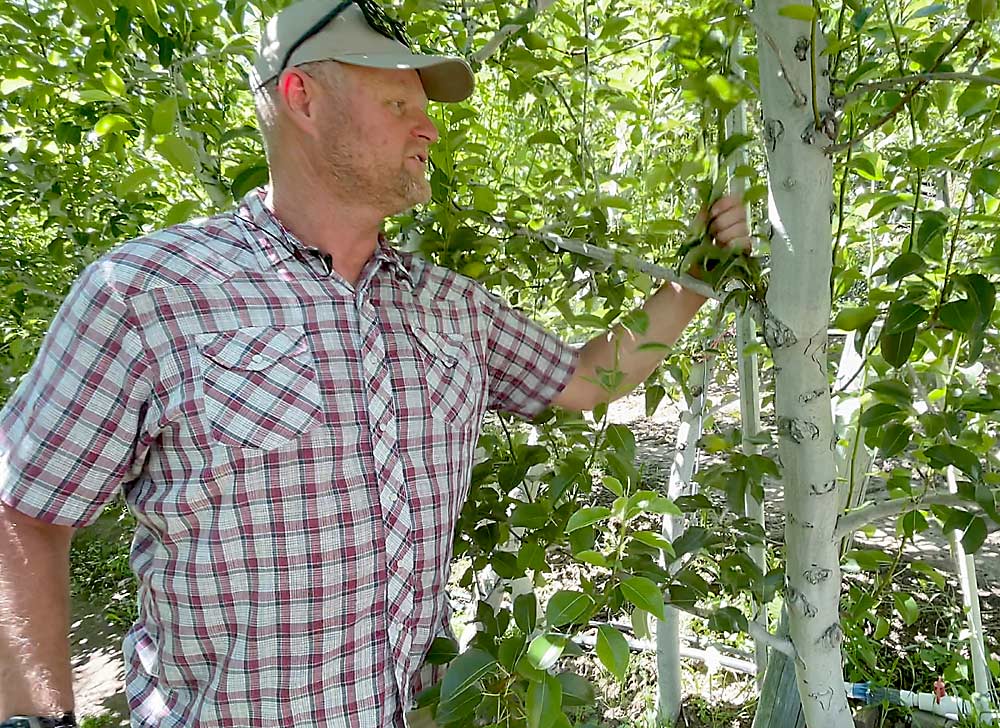
Prey isn’t the only one trying to move to smaller trees, said Ray Schmitten, another grower and horticulturist for the Blue Star Growers co-op of Cashmere.
“Between labor, pest control and production, it’s pushing folks in that (increased density) direction, just like Rudy is doing here,” he said.
Available rootstocks limit those efforts. OHxF 97 is only subtly dwarfing compared to seedling Bartlett rootstocks, he said.
“In our area where it gets cold, the 87 does produce quicker and make a smaller, precocious tree, but we’ve had issues with pear decline as the trees get older,” Schmitten said. “We can still drop well below zero degrees Fahrenheit here in the winter, which quince doesn’t do well with. We’d really like the precocity and growth restraint of the quince we see in Europe.”
Musacchi currently has some cold-hardy quince rootstock selections under evaluation, but Schmitten, Prey and Bob Gix, a longtime pear industry horticulturist and research advocate, predicted some changes ahead for the industry.
While Prey predicted consolidation, as some growers leave the business, all three said there is a growing emphasis on quality.
“From my perspective as an employee of a packing shed, we are really challenged by getting the right pear in the right package to the right consumer,” Schmitten said.
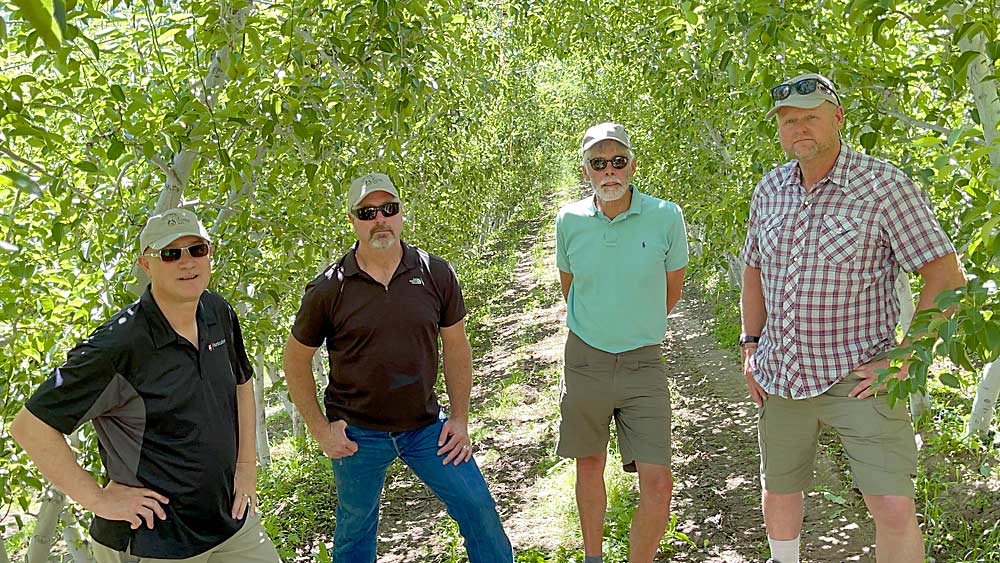
But the approaches to packaging and handling are evolving to meet that challenge and protect the fruit quality growers produce. Musacchi asked them where they think the Northwest’s pear industry will be in 10 years.
“I think 10 years from now, we have a great opportunity to put a great product in front of the consumer,” Gix said.
Cherry forests
On Stemilt Hill outside Wenatchee, in North Central Washington, grower Kyle Mathison shared how elevation influences his farming practices.
He started the tour at an orchard overlooking the Columbia River, where his great-grandfather homesteaded in 1893. It’s the site of the family’s first orchard; today, the family business, Stemilt Growers, has grown into one of Washington’s largest vertically integrated operations.
At 1,500 feet in elevation, the cherries here tend to ripen when the Washington market is flooded, Mathison said. For that reason, he’s tried grafting older blocks from Sweetheart to earlier varieties, such as Black Pearl.
“It’s easy to grow cherries at this elevation,” he said. “Once you get about 3,000 feet, it’s hard, but we are learning about it.”
On the way up the hill, Mathison showed Musacchi his current approach to higher density — aiming for 500 to 600 trees an acre. He plants two-leader trees that have spent an extra year in the nursery, so they are close to 7 feet at planting and reach 12 feet in their second leaf.
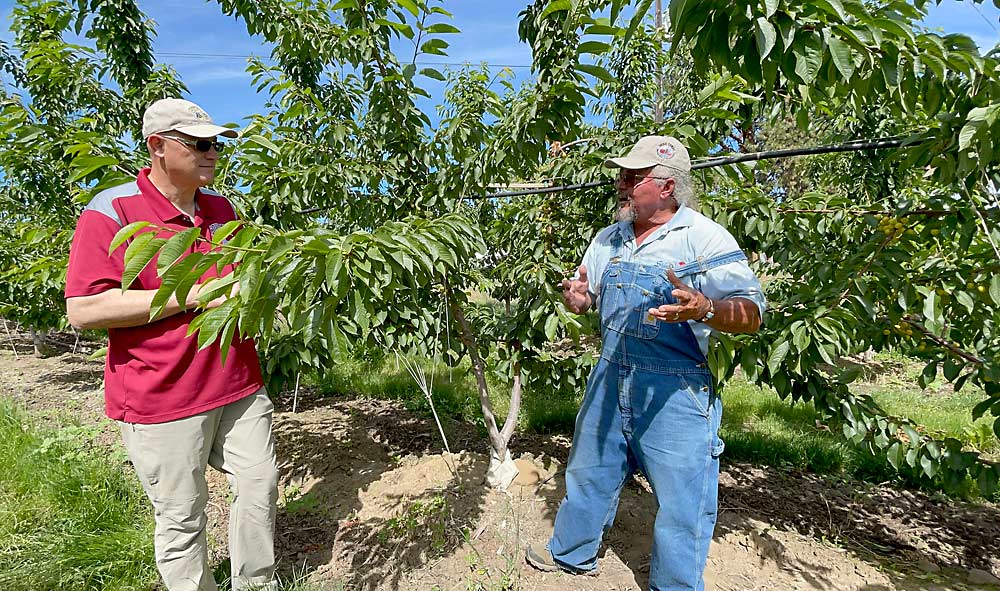
A mid-elevation block at 2,400 feet, a Staccato planting — one of his favorite cultivars, along with Centennial — targets a mid-August harvest, Mathison said. Spaced at 7 feet by 14 feet, the third-leaf trees on Mazzard roots have nearly filled their space, and he’s hoping for economic levels of production next year.
“Here, my dream is 7 tons in the fourth leaf and 10 tons in the fifth leaf and through the rest of its life,” Mathison said, adding that he doesn’t always get what he dreams. He credits self-fertile varieties and long growing seasons for the productivity of his orchards.
“The longer the growing season, the more opportunity to capture sunlight and carbohydrates and flavors,” he said.
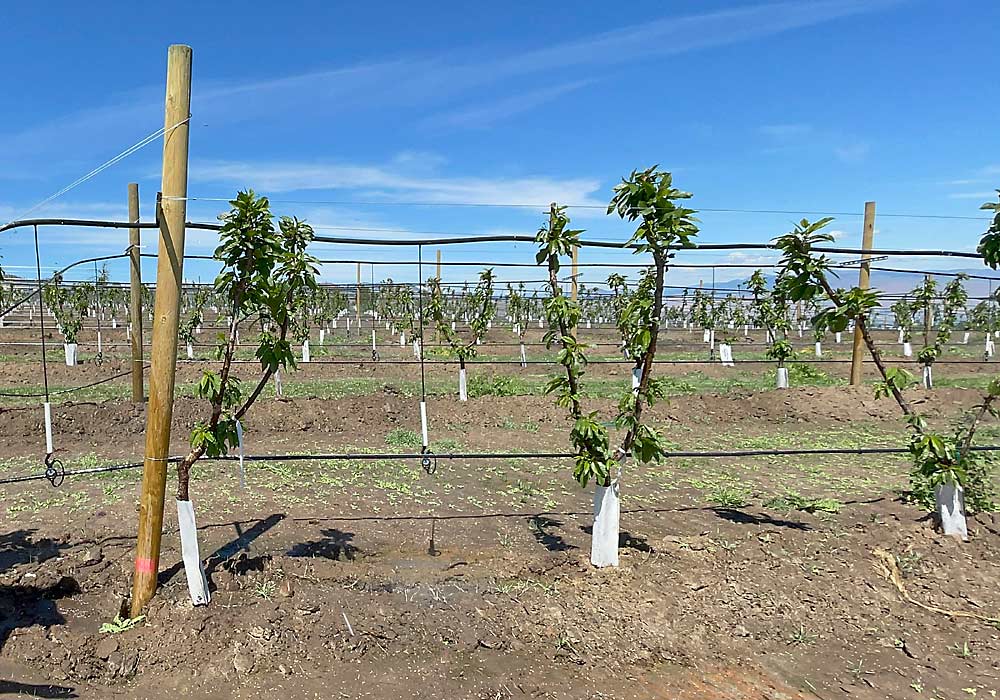
At the highest elevation he farms — currently about 3,400 feet — the growing season is quite short. Mathison compensates for that with heavy loads of his prized compost, made on the farm. It includes yard waste from Wenatchee, manure, culled fruit and a lot of calcium, lime and gypsum for the heavy clay soils. He believes the compost boosts the soil’s biology, which boosts the trees.
“The snow sits in here until the end of March, so the trees don’t wake up until the third week of May. At that time, it’s a rush. We have to get the biology cranking so the nutrition can follow,” he said.
The trees — Staccato on Mazzard in the block Musacchi visited — also get a lot of foliar nutrients and tend to set heavy, so Mathison will thin with lime sulfur and fish oil.
While at lower elevations he likes Gisela 12 and Krymsk 5, he said these trees “need more horsepower in the rootstocks at higher elevation.” Mazzard can handle the heavy soils.
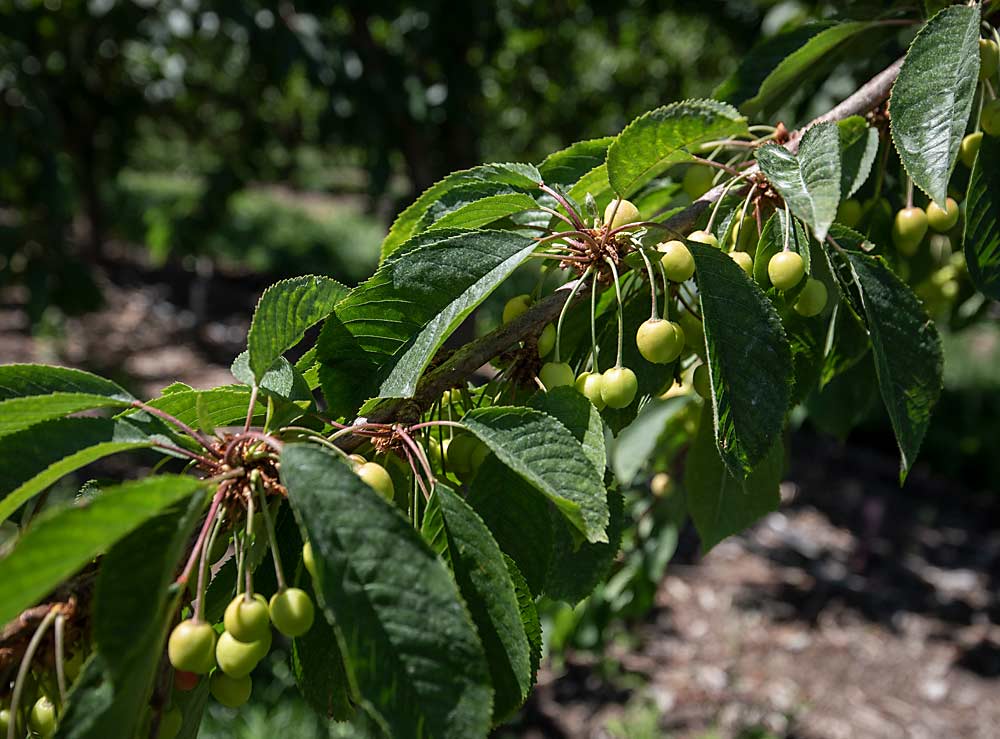
“It’s a lot of extra work and a lot of extra compost,” he said, along with the cost of pumping water nearly 3,000 vertical feet from the Columbia. But the fruit Stemilt markets as “moon cherries” (because they grow half a mile closer to the moon) will harvest in late August or early September when it commands a premium price, he said.
Despite the farming challenges, Mathison said his high-elevation trees are thriving. After all, cherries are native to the forests of the Kazakh mountains.
“It seems like the cherry trees have actually come home to the forest,” he said. “I think when a cherry tree is in the forest, it’s the happiest it’s ever been.”
Putting the right trees in the right place to maximize both their horticultural and market performance is what still makes farming fun for him, Mathison told Musacchi.
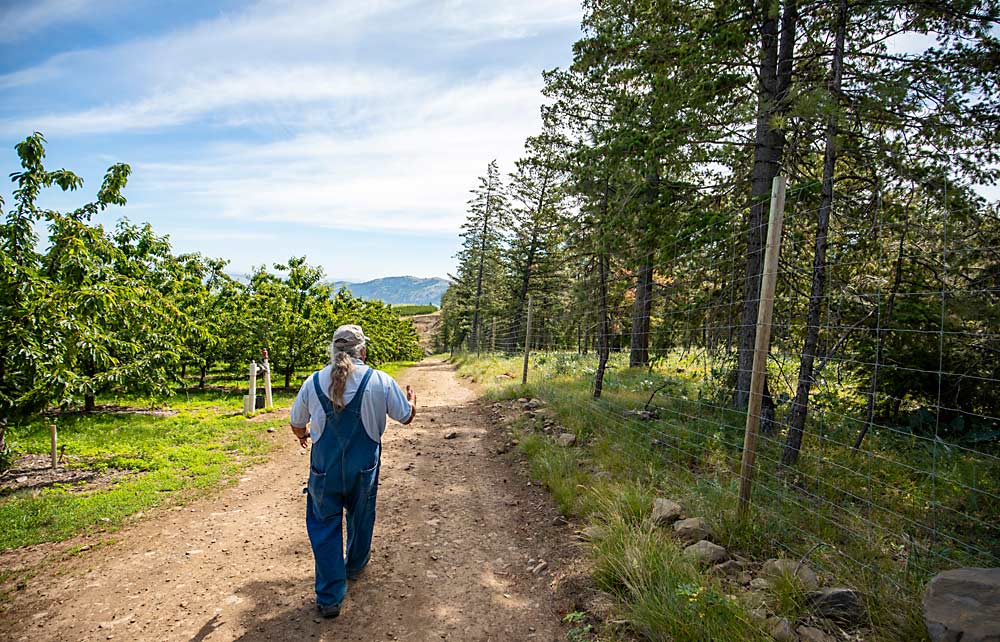
“This is my canvas,” he said, looking across the landscape from 3,400 feet. “You paint with your brush different varieties, different rootstocks, different soil types, different slopes, to make the most beautiful canvas you can. It’s been the art of my lifetime.”
—by Kate Prengaman
Want to see more? The full field day videos will be available from Washington State University at treefruit.wsu.edu.

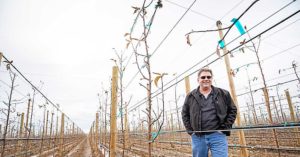
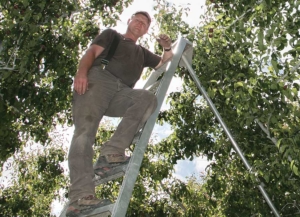





Leave A Comment